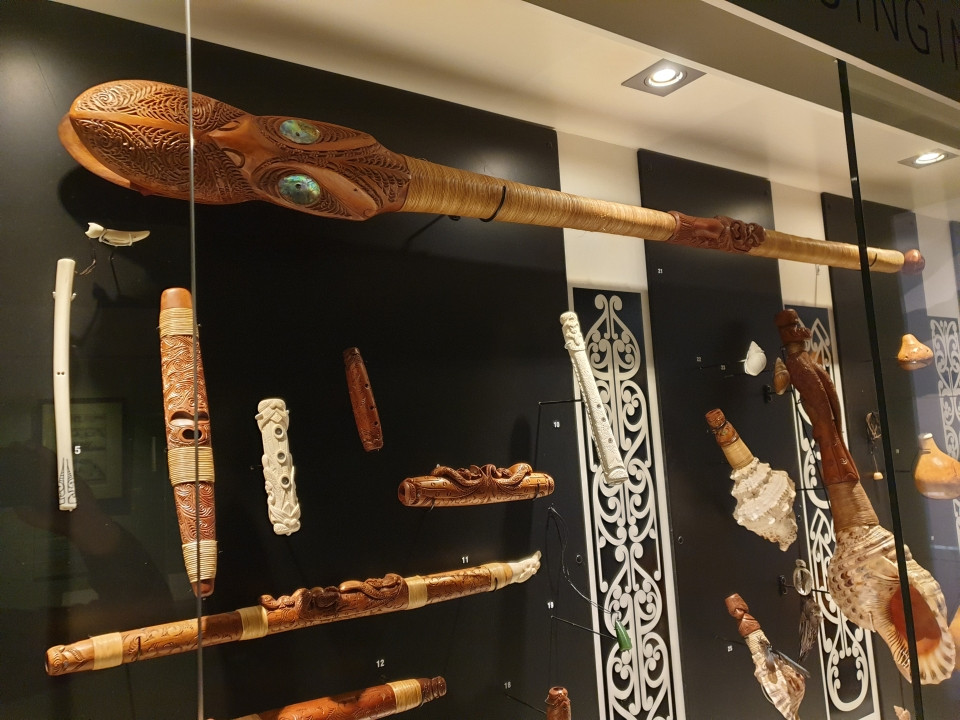New Zealand has a shorter human history than any other country. Current understanding is that the first arrivals came from East Polynesia in the late 13th or early 14th century.
It was not until 1642 that Europeans knew the country existed. The original Polynesian settlers discovered New Zealand during planned voyages of exploration, navigating by stars, ocean currents, the winds.
Traditions tell of the legendary navigator, Kupe, who discovered Aotearoa New Zealand. The waka traditions of individual iwi relate arrivals and where waka journeyed. People did not identify themselves by one name until the arrival of Europeans when, to identify themselves the name Māori, meaning ‘ordinary’, was used.
Hunting, gathering and gardening
Māori were expert hunters and fishermen. They wove fishing nets and traps from harakeke and other plants. They shaped fishhooks from bone, shell and wood. Māori also hunted native birds with a range of snares and bird spears.
Māori created gardens and grew vegetables which they brought from Polynesia. These included the kūmara, hue, taro and yam. They also ate native plants, roots and berries. Kete were used to carry food, which was often stored in a pātaka or in the ground in kōpiha/rua kūmara.
The early inhabitants lived in small hunting groups. Although seals and moa are the most visible remains in archaeological middens, birds, fish and shellfish were important in the Māori diet. Moa were extinct by about AD 1450. Kuri and kiore were also brought on the waka, but domestic pigs and chickens were either not brought or did not survive the journey.

Population
Māori quickly adapted to life in New Zealand. Their life expectancy was similar to that of Europeans at that time (about 35-40 years of age). Some estimates put the Māori population before European contact at around 100,000, but the exact number is not known.
An oral culture
Māori passed on rich and detailed history and legends orally. Society was organised around groups that traced their descent from common ancestors. Reciting whakapapa was and still is an important way to communicate knowledge. Whakapapa links people, ancestors, relationships and provides a connection to the land. It shapes a person’s character and informs them about how they should live.
Warfare
The concepts of mana and utu were strong in Māori culture. This led to regular disputes. Conflicts usually only lasted for short periods of time. To protect themselves from an attack Māori would construct pā. Pā were located in easy to defend locations such as on hills or headlands. They were well built with a series of ditches and banks with a palisade on top that protected its people from intruders. Today, many pā sites can be seen in the North Island but are rare in the South Island.
Māori more commonly lived in undefended settlements or seasonal camps, moving around from place to place as different resources were mature or plentiful.
Craft and trade
Early Māori were skilled at wood carving, including carvings in important buildings and waka. They shaped stone into tools such as adzes and ornaments. When Europeans arrived Māori traded food and tools for a range of European goods including iron and cloth.
How does Ahuahu Great Mercury Island fit in to the picture?
Ahuahu Great Mercury Island is historically significant because it is one of the first areas of Maori landfall and subsequent settlement in Aotearoa.
Captain Cook did not see Ahuahu in 1769 as the Endeavour sailed past. But he did visit nearby Mercury Bay. Cook's visit here over 12 days in November 1769 was seen as a friendly encounter. He received the very first pōwhiri accorded a European in Ngāti Hei’s Wharetaewa pā a few days before the Endeavour sailed.











